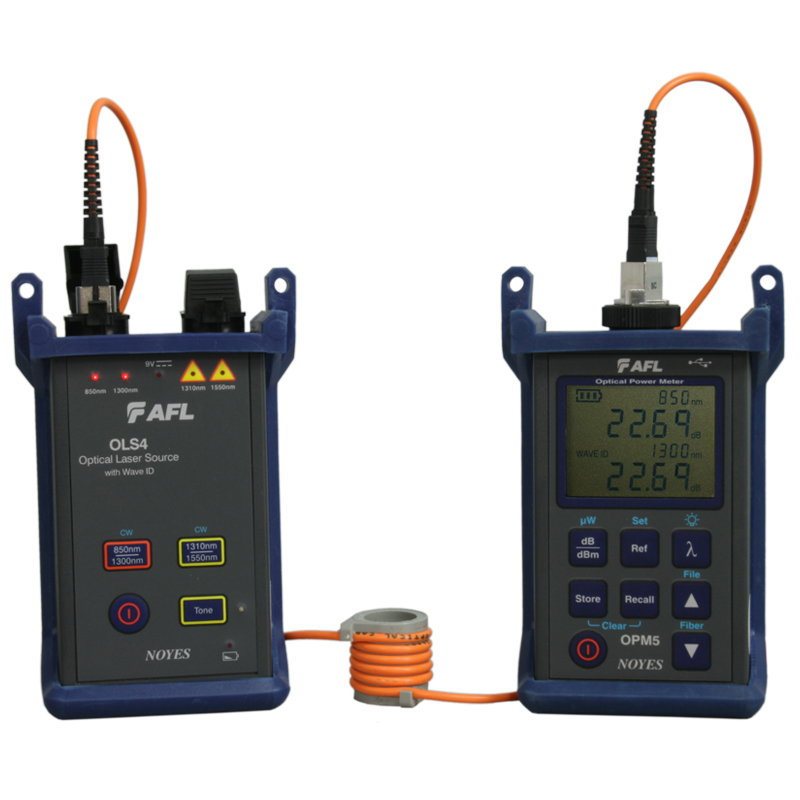Discovering the Benefits of Optical Fibre Testing for Enhanced Communication Systems
The importance of optical fibre testing in contemporary interaction systems can not be overemphasized, as it functions as a structure for making certain network integrity and efficiency. Using advanced techniques such as Optical Time-Domain Reflectometry (OTDR) and insertion loss analysis, companies can not only identify mistakes but additionally enhance their configurations. This aggressive testing approach has extensive implications for signal top quality and operational performance, raising the inquiry of exactly how these techniques add to lasting sustainability in an ever-evolving technological landscape. Recognizing these dynamics is essential for stakeholders intending to maintain an affordable edge.
Value of Optical Fibre Screening
The importance of optical fibre screening can not be overstated in today's data-driven setting. As organizations significantly rely upon high-speed information transmission for everyday procedures, the integrity and efficiency of optical fibre networks are paramount. Checking guarantees that these networks can support the huge quantities of data produced and transmitted effortlessly, fostering effective interaction and connectivity.
Optical fibre screening offers several important functions, including confirming installment quality, recognizing possible faults, and identifying general system performance. Normal testing can avoid expensive downtimes and service disturbances, permitting organizations to maintain functional connection. Additionally, it helps in conformity with industry criteria and policies, making sure that fibre optic installations meet required specs for safety and dependability.
In addition, testing can boost the long life of fiber optic systems. By proactively determining problems such as signal loss, attenuation, or adapter failings, organizations can resolve issues before they rise, hence prolonging the life of their infrastructure. In recap, optical fibre screening is not simply a technical need however a tactical financial investment that improves network reliability, maximizes performance, and inevitably sustains the growth and performance of contemporary communication systems.
Trick Checking Methods

OTDR is a vital strategy used to recognize mistakes, measure splice losses, and examine the overall stability of a fiber optic link. By sending out a pulse of light down the fibre and assessing the shown light, professionals can pinpoint places of mistakes and evaluate the network's performance over fars away.
Insertion loss testing measures the amount of signal loss that happens when light go through a connection or splice. This technique is vital for confirming that connections satisfy given loss limits, which is essential for maintaining ideal efficiency in interaction systems.
Optical return loss screening evaluates the quantity of light reflected back towards the source because of flaws in the fiber or links. High return loss worths show far better performance and minimized signal deterioration.
With each other, these screening methods offer a detailed evaluation of fibre optic networks, ensuring their reliability and performance in varied interaction applications.
Influence On System Performance
Efficient optical fibre testing directly influences the general efficiency of interaction systems. By making sure the honesty of fiber optic cables, screening recognizes potential faults click this site such as attenuation, splice loss, and connector misalignment. These issues can considerably break down signal high quality, bring about interruptions and decreased information transmission rates.

Furthermore, normal optical fibre screening contributes to lasting system sustainability. It allows very early detection of damage, enabling prompt maintenance and upgrades prior to major failings occur. This not just prolongs the life-span of the facilities yet likewise ensures that interaction systems remain affordable in terms of efficiency.
Cost-Effectiveness and Efficiency
Cost-effectiveness is a critical consideration in the deployment and upkeep of optical fibre networks. Carrying out robust optical fibre screening treatments can substantially reduce functional costs by determining concerns before they escalate into significant problems. fibre testing equipment. By discovering mistakes, attenuation, and various other performance obstacles early, organizations can avoid pricey fixings and downtime, which can interrupt solutions and result in earnings loss
Furthermore, efficient screening techniques simplify the setup process, allowing technicians to function better. This equates to lower work expenses and faster project conclusion times. Advanced screening devices, such as Optical Time Domain Reflectometers (OTDRs), makes it possible for an click for more exact evaluation of fibre quality, ensuring that just ideal materials are used, therefore lessening waste.
Regular testing additionally adds to better source allowance. By understanding the network's efficiency, companies can make educated decisions about upgrades and developments, guaranteeing that financial investments are made where they are most required. In summary, optical fibre testing enhances cost-effectiveness and performance, supporting the long-term sustainability and competition of communication systems in a significantly demanding market.
Making Certain Long-Term Dependability
Executing rigorous optical fibre testing not just enhances expense savings and functional efficiency yet likewise plays a crucial function in ensuring the long-lasting integrity of communication networks. Regular testing techniques, including depletion and bandwidth evaluations, aid identify potential deterioration in fiber performance before it brings about service disturbances.
By using sophisticated screening methodologies, network drivers can identify mistakes or weak points in the fibre infrastructure, enabling for prompt removal. This proactive method lessens downtime, making certain that communication systems remain practical and effective. Regular screening adds to the growth of an extra resilient network, as operators can adapt and enhance their facilities based on real-time information insights.
Additionally, guaranteeing conformity with market criteria via optical fibre testing reinforces the high quality and honesty of the whole interaction system. This adherence not just bolsters confidence among stakeholders but also straightens with governing needs, which are progressively rigid.
Final Thought
Finally, optical fibre testing acts as a fundamental component in improving communication systems. By utilizing different testing techniques, such as OTDR and insertion loss evaluations, networks can accomplish ideal performance and reliability. The proactive identification of mistakes not only improves signal quality but additionally minimizes downtime, eventually contributing to cost-effectiveness and operational performance. Moreover, adherence to industry standards cultivates stakeholder self-confidence, guaranteeing the long-lasting sustainability of interaction frameworks in a progressively data-driven landscape.